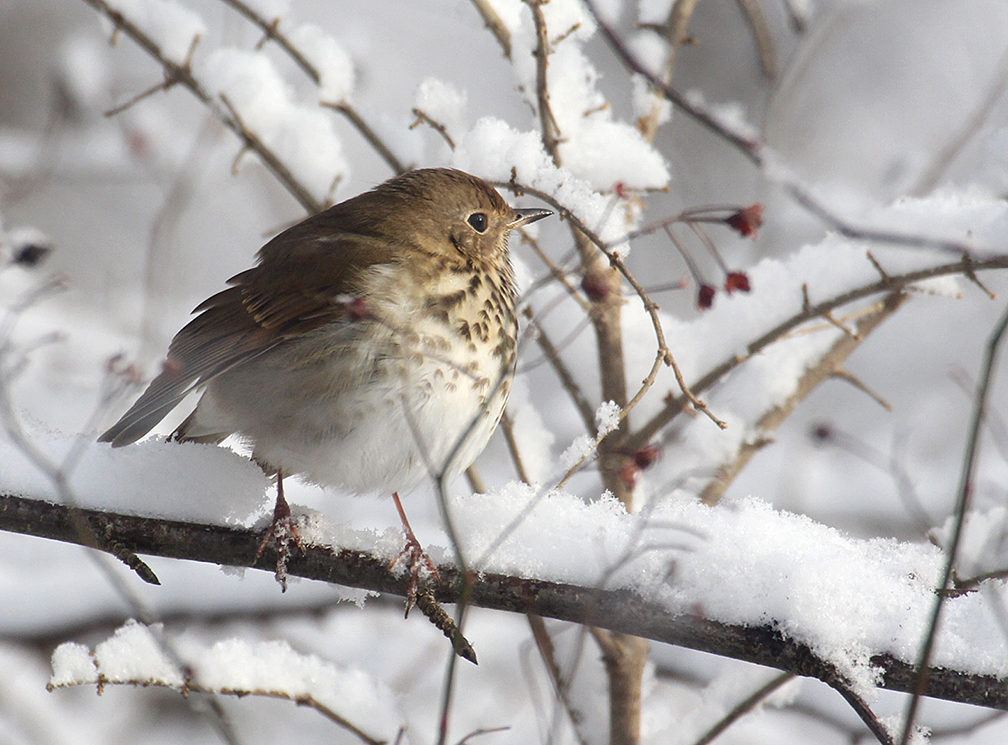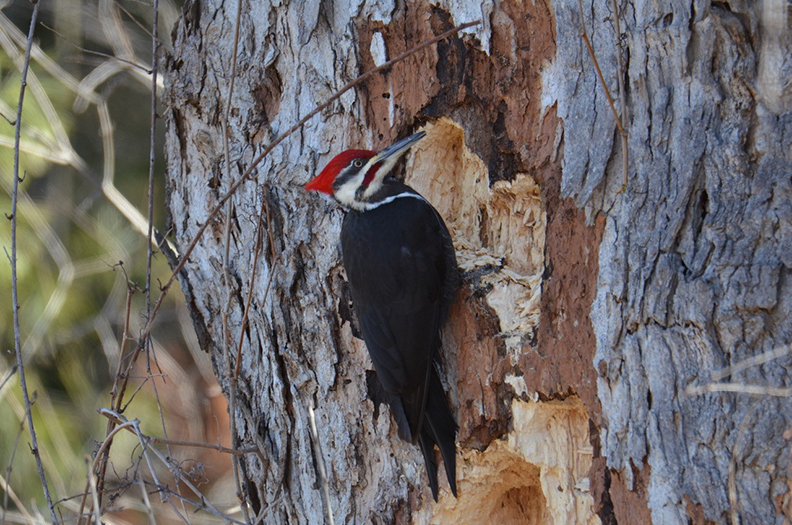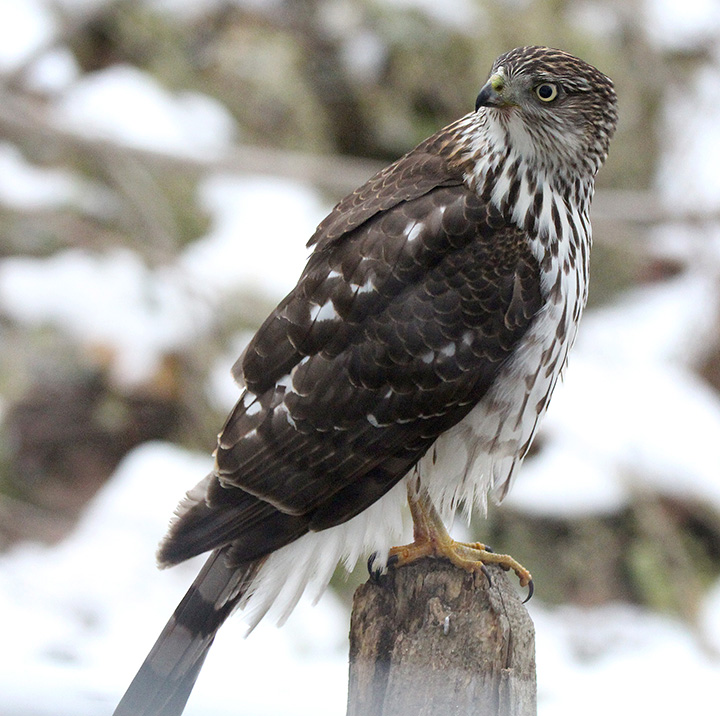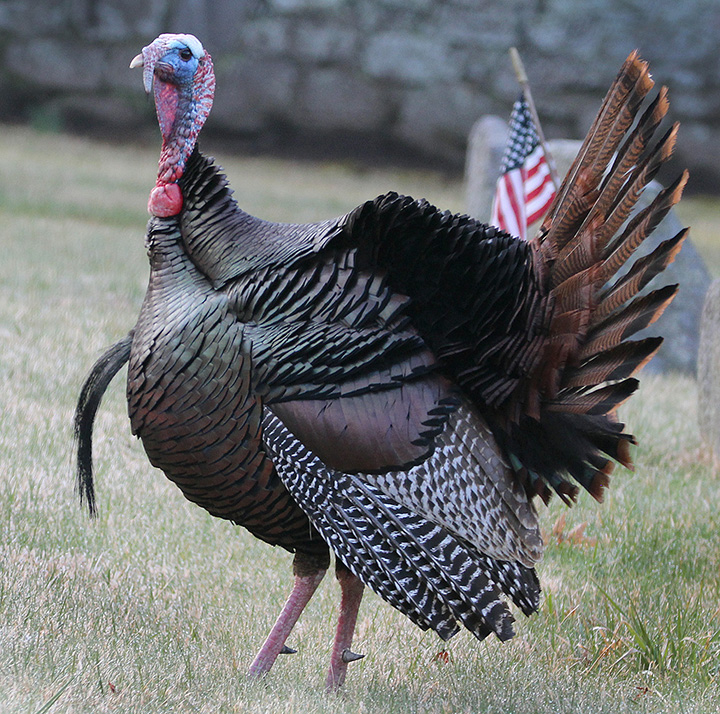Backyard Winter Bird Survey

PHOTO: Hermit thrushes may show up on winter bird surveys in New Hampshire. Chris Bosak Photo

by Chris Bosak
Weirs Times Columnist
It’s time to help the birds again.
As usual, New Hampshire Audubon’s Backyard Winter Bird Survey and the Great Backyard Bird Count take place on the weekend so you can kill two birds with … oh wait, bad expression. You can help two birds (really all of them) with one walk in the woods. New Hampshire Audubon’s Backyard Winter Bird Survey takes place Saturday, Feb. 13, and Sunday, Feb. Feb. 14. Your job is to count birds on those days and submit your results (species and number of individual birds) to the organization to help biologists better understand what is going on with our winter birds. These annual snapshots of data give biologists a broader picture of bird populations and behavior. It helps ornithologists better understand and perhaps find patterns in the winter irruptions of finches and other northern birds. Irruptions are when food scarcity up north drives birds down to New Hampshire and farther south.
This fall and winter have been particularly strong for red-breasted nuthatches. I have two of them visiting every day and many readers have emailed me to say these cute little birds are visiting them as well. Real data on these birds will be critical to get when submitted by participants of the survey.
Other irruptive species include pine siskin, common redpoll, purple finch, evening grosbeak, pine grosbeak, red-winged crossbill, white-winged crossbill and and snowy owl. Are these birds visiting your backyard or favorite place to walk in the woods? Let the New Hampshire Audubon biologists know. Count the common birds as well, of course. That data is just as valuable to have.
The survey is open to everyone, regardless of skill level. Spend an hour or
30 hours counting the birds that weekend and submit your results online at the New Hampshire Audubon website. You may also receive a hard copy of the reporting form and instructions by emailing your name and address to bwbs@nhaudubon.org or calling (603) 224-9909.
While you’re out there (or in there if you’re watching backyard feeders) counting birds, you may as well submit your results to the Great Backyard Bird Count, too. The GBBC started in 1998 as a relatively small initiative to get a snapshot of winter bird populations across the country. It has mushroomed into a global phenomenon with more than 160,000 checklists turned in online worldwide last year. According to GBBC officials, it created the “largest instantaneous snapshot of global bird populations ever recorded.”
The GBBC runs from Friday, Feb. 12 to Monday, Feb. 15. Again, all skill levels are welcome, participation is free and no set time commitment is required. Visit www.birdcount.org for more information and instructions on how to submit results. What will show up on New Hampshire checklists? It’s hard to say. It’s been a strange winter with a sage thrasher being seen regularly in Hinsdale, boreal chickadees being found on Mt. Monadnock far from their northern range, a red-headed woodpecker frequenting Keene and evening grosbeaks showing up everywhere in the Granite State. Have your say and participate in the NH Audubon Winter Bird Survey and GBBC.
I heard from some readers this week who will have some interesting sightings to submit if the birds stick around for a few more weeks. Mimi from Troy reported seeing double-digit numbers of blue jays, chickadees and juncos, as well as several white-breasted nuthatches, red-breasted nuthatches, cardinals, mourning doves, hairy woodpeckers, downy woodpeckers, evening grosbeaks and three eastern bluebirds. The bluebirds have been eating mealworms and suet.
Brian from Keene sent some great photos not related to the winter surveys, but as a follow up to last week’s column about the importance of saying native insects. I had mentioned that fish feed on insects and birds such as herons feed on the fish, hence the important, but sometimes indirect, role insects in helping birds. Brian sent some photos he took a few years ago of a great blue heron eating grasshoppers. It reminded me of when I watched a green heron eating dragonflies near a pond several years ago. Mark your calendars for next weekend and let me know what you find out there.
Chris Bosak may be reached at chrisbosak26@gmail.com or through his website www.birdsofnewengland.com



